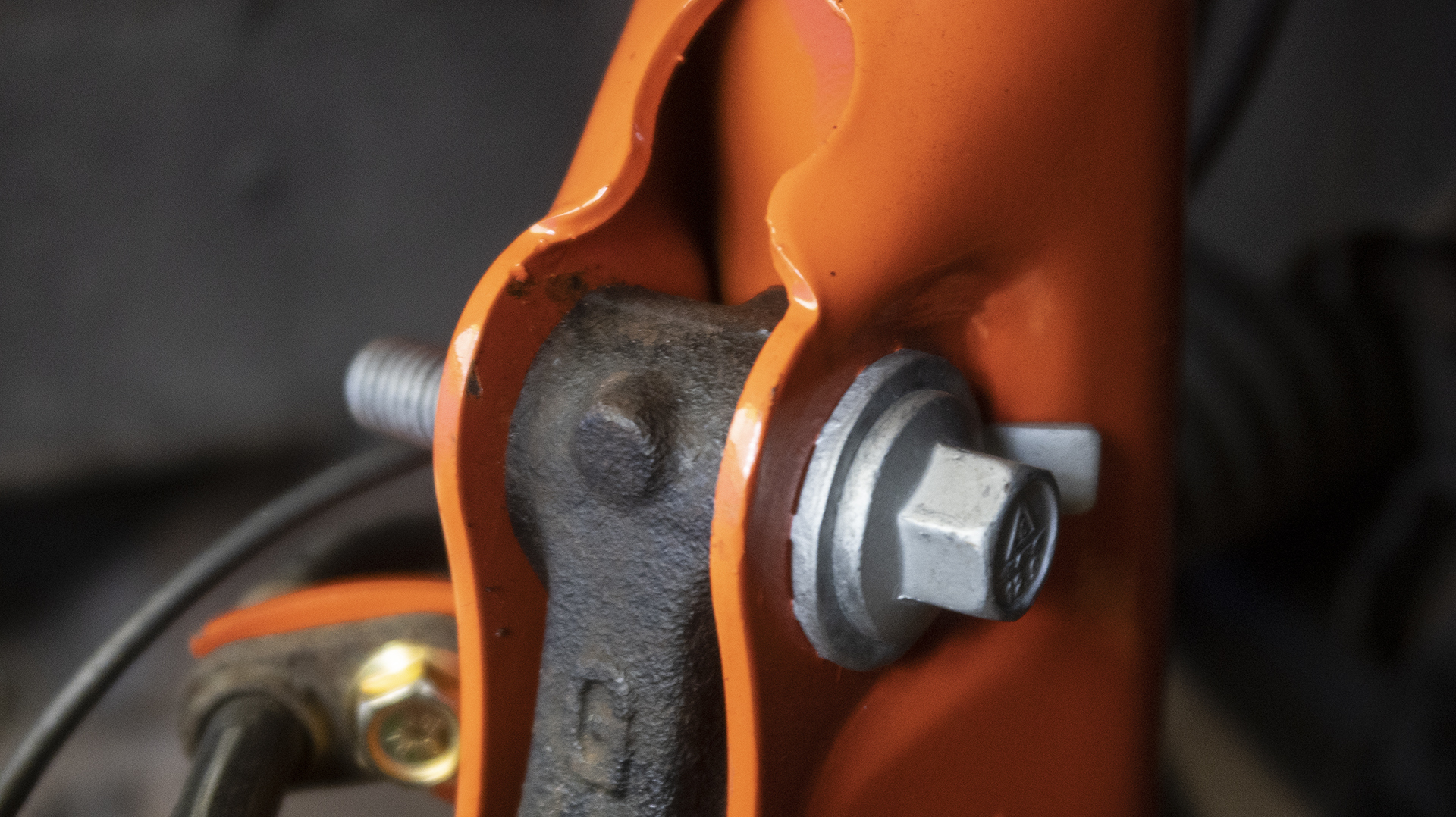

We may earn revenue from the products available on this page and participate in affiliate programs. Learn more ›
Something I’ve learned in all my time modifying cars is that the smallest parts can make the biggest difference. Be it geometry correction bushings, tire pressure tuning, or just understanding how your suspension works, starting small and progressively modifying different parts of a system yields better results than shotgun modding. One of the small bits of that puzzle that I consider essential is the camber bolt.
Camber bolts are cheap, easy, and pose a noticeable effect to handling on any car that can accept them. They have a stigma for being perceived as a bit dodgy, and they’re sometimes called crash bolts for a reason. The collision repair business would use them to bring otherwise bent cars back into some semblance of shape. For my purposes, however, they add a touch of negative camber on cars that have zero camber from the factory, all for around $30.
Unfortunately, some cars won’t be able to accept camber bolts. You have to have a conventional bolt-type strut suspension to use them. Clamp-type struts like you see on newer Hondas, Volkswagens, and BMWs cannot use them, nor will the dual-wishbone or multi-link stuff. Most cheaper cars use an old-school bolt-type strut, so this will still apply to many cars, especially some enthusiast favorites. For the fancy folks with wishbones or clamps, camber plates are the only option.

The bolts themselves are dead simple. Instead of a normal straight shaft, camber bolts add a cam profile to the bolt that makes it thicker on one side, allowing for the actual adjustment of camber. It adjusts by simply turning the bolt, and it’s easy to eyeball. There is only one camber bolt per side—typical strut suspensions have two bolts that fasten the damper to the upright via holes in the upright and strut. The camber bolt replaces the top one.
The debate around negative camber is a little less simple, however. Plenty of folks are worried about excessive tire wear and tramlining, when it comes to dialing camber into suspension. I believe camber wear to be somewhat exaggerated, and it’s often blamed instead of misaligned toe. Camber doesn’t usually kill tires, toe does. Depending on driving style and use cases, camber might be a waste but it takes a long time for camber to wear tires in any appreciable way. In fact, it may help reduce tire wear if the car is driven on backroads or canyons often, as has been my experience.

For spirited driving, camber is almost nothing but upside. Of course, anything can be taken too far and there is certainly too much camber, but its hard to go too far with camber bolts by nature. They only allow about a degree and a half of adjustment on most cars, which is just right for a mild street and track setup. At this level, there will be minor tramlining (the tendency for the car to follow ruts and banking in the road) but almost no extra wear. Cars usually don’t come like this from the factory because of drivabiity concerns primarily with the aformentioned tramlining and steering responsiveness. Camber will make steering more active on center, which most regular folks apparently do not want.
For lunatics like me, this is exactly what I want, and I cannot sing the praises of negative camber enough. On a tire level, it allows the tire to work better by utilizing the whole contact patch instead of rolling over and excessively deforming. Think of it like riding a motorcycle or a bicycle where steering is mostly done by leaning. By posing the tire against the pavement at an angle, it rolls over onto the full face of the tread instead of wasting energy on the sidewall.

All it takes is a proper alignment after the install, and any downsides are typically negligible. This depends on the car, but on the few I’ve owned, I’ve seen nothing but decreased wear and better handling on all of them. Granted, my driving is half canyon driving, so I benefit from the mod all the time. I talk about feel constantly, and this changes things up front in a great way. I’d quantify it as the car being much more eager to turn in just off center, and more grip in the mid corner. I’ve also found that cars with some camber settle into corners a bit better, where you can feel the slip angle curve and grip build up and fall off more naturally— in other words it’s a bit less doughy.
Sweetening the deal, it only costs about $30 on most cars. What is there to lose?
Read More From The Garage
- How Roll Center Affects Your Car’s Dynamics
- Why Sway Bars Should Be Your First Suspension Mod
- How Geometry Correction Bushings Improve Steering Feel
- Why You Shouldn’t Overlook Engine Mounts as a Performance Mod
- How Airing Down Tires Can Make a Normal SUV an Off-Road Hero